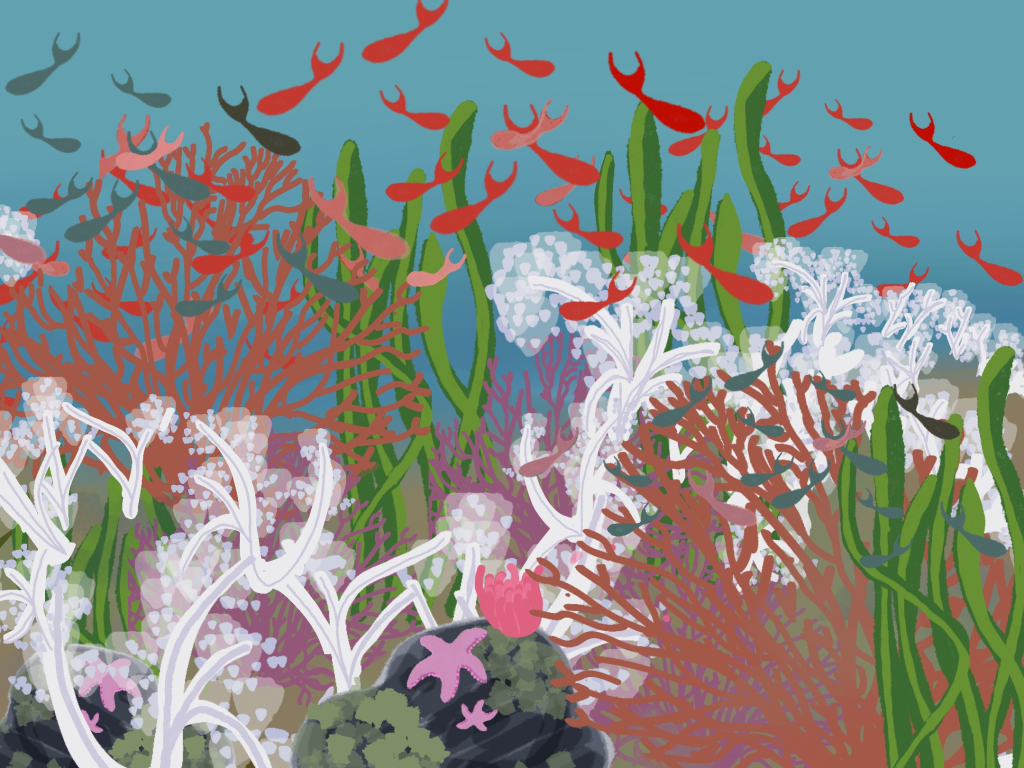Artificial intelligence (AI) is making significant headway in coral reef restoration. With the help of AI, more images are captured, mapping accuracy is improved, and we better understand how coral reefs develop.┬Ā
Unlike AI, coral reefs aren’t artificial
Coral Reefs are very fragile ecosystems. Rising ocean temperatures, changes in water quality and increased sun exposure all negatively affect coral.┬Ā
When the coral’s environment changes, it goes through stages of ŌĆśbleachingŌĆÖ. It expels the microscopic algae that lives within its tissues. This algae is where coral gets its famously bright colors from.┬Ā
After the coral expels the microalgae, its white skeleton is left exposed.┬Ā This is where the term „coral bleaching“ comes from. Coral is more susceptible to disease in this state and is likely to starve without the algae present.┬Ā
According to the EPA, around 25% of all marine life rely on coral reefs at some point in their life. Meaning that coral and coral reefs are essential to ┬╝ of ocean life survival.
Artificial Intelligence and Coral Reef Projects
Artificial intelligence (AI) has begun to make coral reef restoration just a little bit easier.
Project CORail, acoustic monitoring of soundscapes, and AI 4 Corals are all examples of different projects where AI is being used to make the reefs a healthier place.┬Ā
Project CORail monitors fish populations in the Philippines. The higher the number and species of fish in and around a coral reef, the healthier the reef. So, Project CORail uses underwater cameras to identify types of fish and count fish populations in coral reefs.
Ben Williams, a University College of London and Zoological Society student, conducted a study using AI. This machine learning algorithm listens to the ŌĆ£pulseŌĆØ of coral reefs. Williams claims that you can tell a healthy coral reef versus unhealthy just by the soundscape.┬Ā
AI 4 Corals is one of many projects that are still trying to get their sea legs. This project is run by Reefscapers and is still in the fundraising process. The main goal is to build an ŌĆ£autonomous catamaranŌĆØ which will take pictures of coral growth.┬Ā
Why is Artificial Intelligence useful?
Coral Reef restoration is a time consuming and costly task. According to Frontiers in Marine Science, using AI will help jump these hurdles.┬Ā
AI is able to take continuous pictures of the coral reefs. This helps scientists monitor its health daily, without having to physically be on sight. It also detects smaller features than its human counterpart. So, the accuracy of the coral reefscape improves, along with our maps.
It also helps us learn more about coral reefs. Reefscapers main premise is to gain knowledge on how coral reefs develop naturally, so that they can successfully propagate corals. Monitoring a reef 24/7 for long periods of time is much easier with a machine.
Lastly, low-cost AI machines are becoming more and more common. Not only are these machines affordable, but they change their algorithm as information is being collected. Meaning that there does not need to be a person processing all this data and updating the codes.
The undoable can be done┬Ā
Artificial Intelligence can seem daunting, it certainly does to me. Nobody wants machines taking away jobs from humans or having a ŌĆśmindŌĆÖ of its own. But what about the jobs that humans canŌĆÖt do? Maybe, being more open-minded of how AI will help us restore the things that humans cannot is something to be considered.┬Ā
Sources:┬Ā
Frontiers | What Can Artificial Intelligence Offer Coral Reef Managers? (frontiersin.org)
AI Helps Power Coral Reef Restoration | Accenture
https://www.epa.gov/coral-reefs/basic-information-about-coral-reefs



